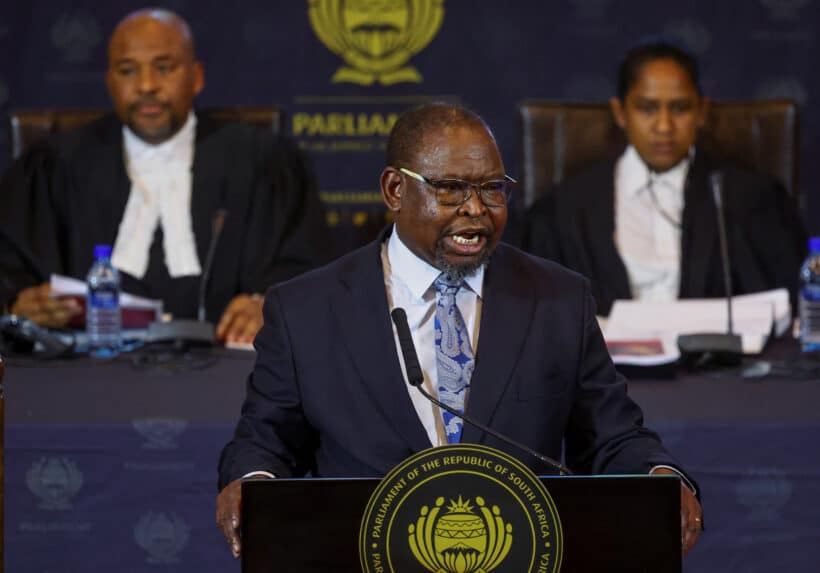
South Africa’s Finance Minister Enoch Godongwana announced the drawdown of R150 billion from the country’s Gold and Foreign Exchange Contingency Reserve (GFECRA) account over the next three years saying the money will help keep borrowing and debt service costs low.
Godongwana told parliament debt levels were unsustainably high at a time when the economy was facing lack-lustre growth because of power shortages, logistics bottlenecks and a general mismanagement of public funds.
The GFECRA, which is held by the South African Reserve Bank, captures losses and profits on foreign currency reserves, which helps reduce currency volatility. The reserves are currently valued at over R500 billion rand as the rand trades near its lowest levels against the dollar.
Godongwana said dipping into the reserves was a mid-term solution that helps lower the gross borrowing requirement from R553.1 billion in the current fiscal year to R428.5 billion by the 2026/27 fiscal year.
He cut his growth forecast for 2023 to 0.6 percent but forecast an acceleration to an average of 1.6 percent from now till 2026.
“The growth outlook is supported by the expected easing of power cuts as new energy projects begin production, and as lower inflation supports household consumption and credit extension,” he said.
Godongwana also announced he is committing R943.8 billion in total infrastructure funding over the next three years to mitigate the country’s energy supply and logistics failures.
Transnet, in particular, has been granted a new guarantee of R47 billion, he said, with R22.8bn available for immediate use. Godongwana says the guarantee is mainly to address persistent challenges relating to liquidity and supply chain backlogs.
Compared to a year ago, the country’s budget deficit for 2023/24 is projected to have worsened to 4.9 per cent of GDP, better than analysts’ projections of a 5% deficit.

